|
Weekend
3, October 18-19 2003 "Fortunately art is a community effort
- a small but select community living |
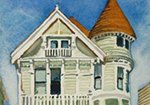 Sherrod
Blankner
Sherrod
Blankner
has been living and painting in San Francisco for ten years. Working with
watercolor and oil, she has focused on the particular shape of the San
Francisco landscape, from the sharp triangles of Victorian rooftops to
the bright light from the western exposure to the soft dark foliage of
overgrown trees striving to survive in the city. Her work portrays primarily
the neighborhood of Noe Valley, where she is well known for her paintings
of Dolores Street and Dolores Park. SherrodBlankner.com
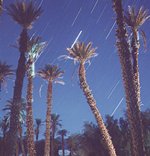 Tim
Baskerville
Tim
Baskerville
BFA., received his degree in photography and liberal arts from the University
of San Francisco. He has been photographing for more than 20 years, and
has taught night photography at UC Berkeley Extension, the Cape Cod Photographic
Workshops, and the Photographic Resource Center at Boston University.
He has written articles about night photography for Camera and Darkroom, the Friends of Photography with Nazraeli Press, and Photo Metro magazine. Baskerville founded The Nocturnes as an exhibiting group of artists in 1991, and the critically acclaimed Web site of the same name in 1996. TheNocturnes.com.
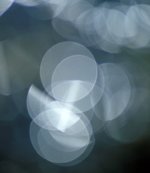 Dale
Carter
Dale
Carter
BFA, Drawing and Painting, California State University, Long Beach; studied
photography at Saddleback College; private and public high school drawing,
painting, and photography instructor.
As a child I grew up on the waterfront, looking out over the Pacific Ocean; it seemed to me that some sort of answer was out there. Now, through photographs, I’m trying to capture that moment when nature reveals itself. To achieve this, the focus of my work is not to replicate nature but to compose and document abstract forms that exist just beyond our usual frame of reference. DalecarterPhotography.com
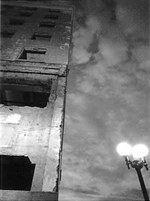 Tram
Davies
Tram
Davies
In my photography, I attempt to convey feelings of alienation and wonder
by rendering foreign places more foreign through complex compositions
that urge the viewer to roam around the shadows and geometric patterns
of the images. My images are mazes that conjure an implied narrative describing
strange yet beautiful places.
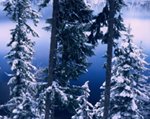 Todd
Harry Friedlander
Todd
Harry Friedlander
Landscape photography is a reflection of an environment, be it natural,
man-made or a combination of the two. There is no difference in the beauty
of a tree or an abandoned crane; a river or a freeway; the moon in the
sky or a lone window in an otherwise blank facade. Form, space, time and
place; these are what I try to capture with each frame. On a visual level
my work is about distilling a seemingly complex scene into a simple image.
I filter out the complexity of the object and reduce it to the simple
geometries of depth, balance and view. Over time all environments change,
and for me each photo aims to capture a sense of place and time that is
unique. My nascent reflections on the cyclical mortality of ourselves,
our cities and the land inspire me to shoot more. Staying ahead of progress
gives and urgency to when and where I shoot. Photographing these places,
standing in silent austerity before being changed forever, is my only
recourse. ToddFriedlander.com
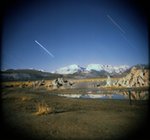 Susanne
Friedrich
Susanne
Friedrich
I graduated from New England School of Photography with honors in photojournalism
in 1986. I also studied graphic design at Mass College of Art and oil
painting, printmaking and screenprinting at the San Francisco Art Institute.
All of these media have had a profound influence on my photographic style.
I love to make images that transform the ordinary into something mysterious.
I find inspiration in nature and my environment. Since 2002 I have focused
on photographing with a Holga Camera, often at night. I also love handcoloring
black and white images which makes the photographs more of a hand made
thing and lends them a aura of surreality. SanneArt.com
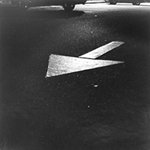 Karen
Gellert
Karen
Gellert
For the past three years, I've been photographing urban environments at
night. Rather than focus on cityscapes or street life, I've chosen to
get up close to city surroundings. I seek out unremarkable spaces, that
are used and ignored as people go about their daily business, yet are
transformed when day turns into night. In the evening, street lights cause
asphalt and cement to glitter, interior lights glow against black exterior,
and strong geometric patterns of black and white appear.What I love most
about the night is its way of enveloping space, causing details to disappear
and allowing the mind to fill in what the eye can no longer see.
KarenGellert.com.
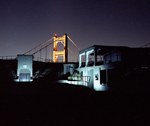 Randy
Gunning
Randy
Gunning
I have been taking pictures for more than 20 years, but I have only
recently started to show my work. I am attending classes at UC Berkeley
Extension for the Certificate in Photography program for the last three
years. While I have worked in many different types of photography, I
always come back to photographing at night because of that special quality
of light you find with very long exposures.
More images and info at RGMphotography.com
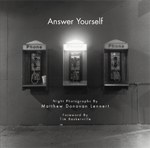 Matthew
Lennert
Matthew
LennertMy current body of work, coming from my book Answer Yourself, is a journey into the pyschological landscape of the mind. It is one man's journey of self discovery. The images are metaphors for the lessons learned on this journey. I have been photographing since I was able to buy my first camera at the age of 12 with money I saved in a Band-Aid can which I earned washing cars and babysitting. I studied at The San Francisco Academy of Art College in the mid-80s with Steve Harper, a true father-figure to those night photographers that were fortunate enough to study with him. matthewdonovanlennert.com
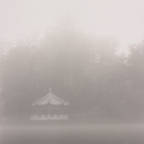 Adam
Moore
Adam
MooreThough I was surrounded by photography from an early age, in the end I came to photography relatively late in life. After obtaining liberal arts degree in History and Political Science from the University of California at Santa Cruz I began the meandering journey of a rootless BA. Upon determining that I was not going to become the Under Secretary of State for Eastern European Affairs, I gradually allowed my energies to seek new outlets. An abiding interest in both history and politics, as well as enduring visions of Peter Lorre's trial in Fritz Lang's "M", pervade my photographic vision. Photography should teach, move, and at its very best, give the willies. AdamMoore.com
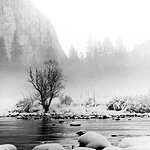 Greta
& Manu Schnetzler
Greta
& Manu Schnetzler Emmanuel (Manu) Schnetzler was born in Strasbourg, France where he began taking photos at age 15 when he spent his first night in a darkroom. He published his first photo a few years later and was a photography instructor at summer camps on the Côte d'Azur. Greta Schnetzler is a native of Alabama where she first studied photography and worked as a photographer for a small town newspaper. She has also studied painting and drawing at the San Francisco Art Institute. For the past seven years they have been pursuing a common vision in their collaborative photography work. Greta and Manu reside and work on Potrero Hill where they have exhibited their work with other “Hill” artists in the longstanding annual group exhibit. They have also exhibited their work in various solo exhibitions. This is their fourth year to participate in open studios. www.Schnetzler.com
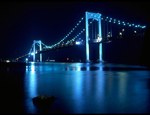 Karen
Schreiber
Karen
SchreiberAs an adult nurse practitioner, I bring many of those same skills to my photographic work: compassion, gaining rapport rather quickly with people, and a keen sense of observation through both verbal and non verbal clues. These skills are helpful for photographing people either in chance encounters or in longer term documentary projects where building relationships is important. Medical knowledge helps in interpreting certain situations, but usually losing oneself and just photographing is what occurs. The key in photography is to remember the goal. The camera records what is in the viewfinder, but the image that occurs should expresses a feeling or require the viewer to study the photograph, or to make an interpretation or a discovery. Karen Schreiber has several bodies of work: portraits, people, landscape, night photography, travel, and documentary. For examples, see www.KPSphoto.com
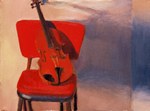 Matthew
Silverberg
Matthew
Silverberg
These paintings are a mix of simple still lifes and landscapes. At times,
the objects or figures are the central focus (chairs, musical instruments,
wildflowers, bathers, souvenirs); at other times, the play of light or
the glow of shadows is the true subject. A still life is arranged as either
a formal study or a small-scale diorama or vignette — a snippet
of life, in which emotion and states of mind are emphasized, ranging from
reverie to anger, sadness to elation. Realism and the traditional still-life
genre is combined with a personal mythology of everyday objects, creating
the particularity, quirkiness, and ambiguity of these still-life situations.
Landscapes are simplified as well, focusing on light and color at an intimate
scale, or simple figurative outdoor scenes.
Website: MatthewSilverberg.com
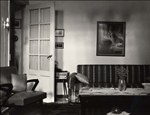 Lena
Tsakmaki
Lena
Tsakmaki moved to the Bay area from her native Greece in 1992. Initially she worked as a recording engineer/producer but since 1996 she is pursuing full time her lifelong interest in photography. Her format of choice is the 4x5 view camera and her interests are divided between representational and abstract/experimental photography. Her current portfolio “Empty Places” explores buildings as vehicles and acting stages of the emotional lives of the people who live and pass through them, using as a paradigm buildings in her life.






